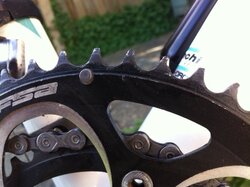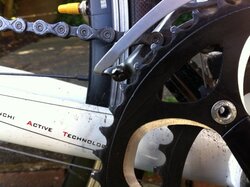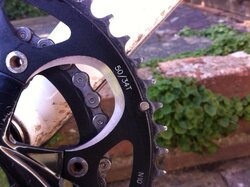toby123
Senior Member
- Location
- West Sussex
Hi, in a few weeks I'll be replacing my chain and cassette and I'm just wondering whether I should replace the outer chainring at the same time. The question is, is it worn to the extent that if I continue with it, I'll be losing efficiency in the drivetrain? I think I need to have a good look around at new ones in bike shops but I'd really appreciate if anyone can offer their opinion based on these photos.
I've noticed that the teeth on the outer ring are much more spiked than the ones on the inner, which I must use for no more than 10% of the time. Is this due to wear or are they cut differently in the factory? In future, I'll have to pay much more attention from the beginning...
My other question is whether I need to worry about compatibility with Campag, or is it just a question of which chain I use (currently KMC)?
I've noticed that the teeth on the outer ring are much more spiked than the ones on the inner, which I must use for no more than 10% of the time. Is this due to wear or are they cut differently in the factory? In future, I'll have to pay much more attention from the beginning...
My other question is whether I need to worry about compatibility with Campag, or is it just a question of which chain I use (currently KMC)?



